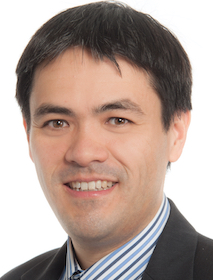Implantable synthetic cytokine converter cells with AND-gate logic treat experimental psoriasis.
Schukur L, Geering B, Charpin-El Hamri G, Fussenegger M.
Sci Transl Med. 2015 Dec 16;7(318):318ra201. doi: 10.1126/scitranslmed.aac4964.
- Psoriasis is a chronic auto-inflammatory condition which has a genetic and environmental cause. Because of this the disease goes through phases of improvement and worsening (flaring) and the treatment is NOT always adapted to the current disease activity
- There is a way to do this via specialized “Theranostic cells”. Simply defined it is an implantable device containing cells which gauge psoriasis disease activity through measurement of cytokines.
- In this Swiss study (Basel) implants* were introduced into the peritoneum of mice and psoriasis-like lesions were induced with imiquimod.
- Disease activity was measured by engineered human embryonic kidney cells which detected the combination of the psoriasis-associated cytokines TNF and IL-22 levels
- After processing, the designed cells are activated to release matched levels of cytokines IL-4 and IL-10: these are anti-inflammatory cytokines which subsequently allow the control of psoriasis.
How do these engineered Stem Cells work ?
-TNF receptor signaling in the converter cell is artificially coupled to IL-22 receptor (Il-22R).
-the detection of TNF drives the expression of a functional IL-22R, which is required to sense the presence of IL-22
-The IL-22R signaling pathway itself is rewired to a transcription factor called signal transducer and activator of transcription 3 (STAT3), and a synthetic STAT3-responsive promoter drives the expression of IL-4 and IL-10
- These implants are specific to psoriasis, and are not influenced by other inflammatory processes or infections (bacterial, viral).
- Results show that these implants stopped acute flares of psoriasis, improved the lesions and contributed to normal skin tissue structure.
- This suggests that psoriasis as other chronic conditions could be efficiently managed by using this method. Still in practice there are still many hurdles which include:
- type of cells to be used for the synthetic design in humans (most likely autologous
- cells)
- the differences in treatment responses in individual patients
- the dosing performance overall and for each individual patient
- the localization of implantation
- the possibility to remove the implant easily
*alginate-based biomaterial with an optimal pore size for cytokine diffusion, but lacking immunogenicity [the biomaterial had been successfully used in clinical trials of type I diabetes]
Article selection: Prof Dr Jean-Hilaire Saurat – dermatologist. Geneva, Switzerland



 +41 22 738 18 48
+41 22 738 18 48